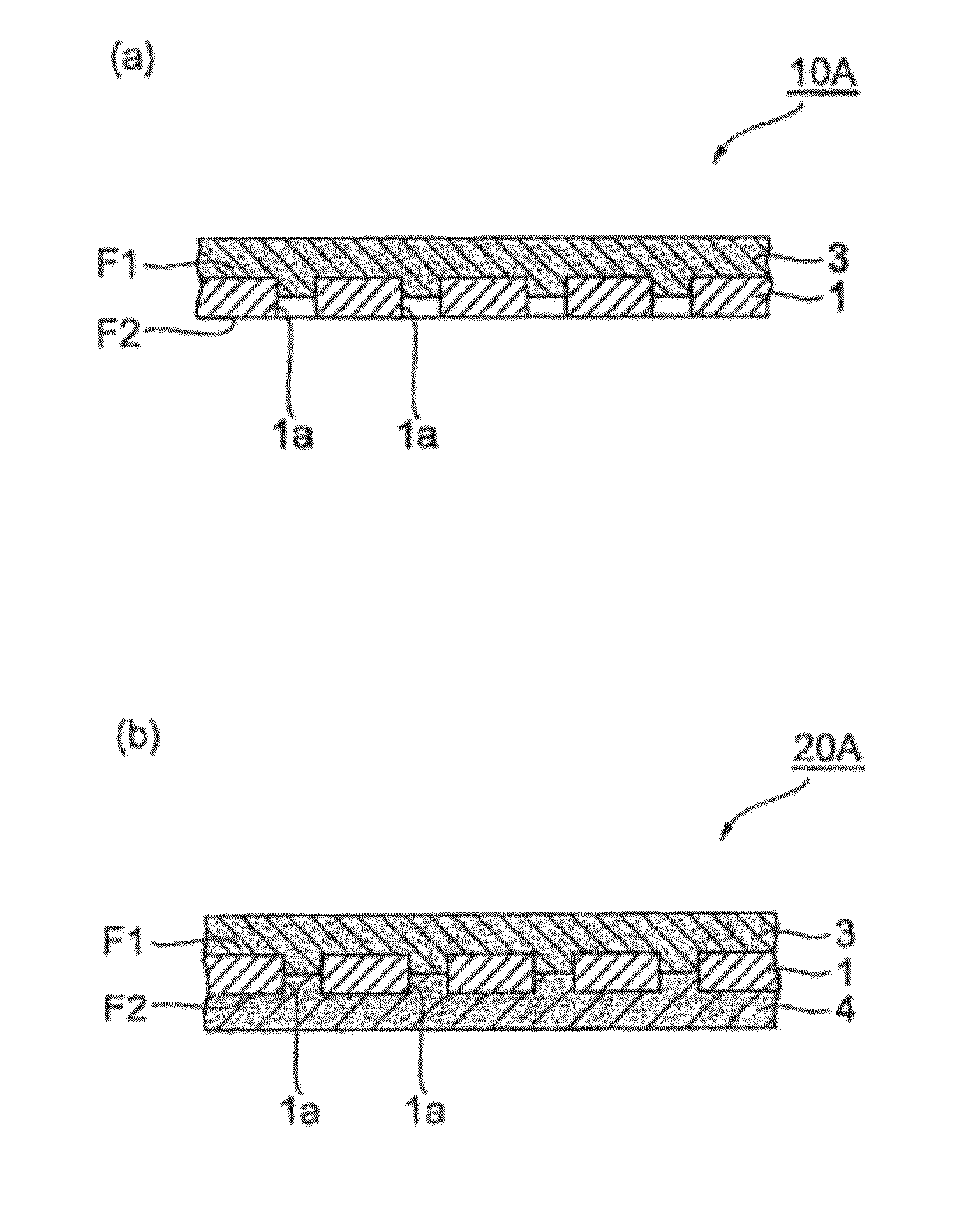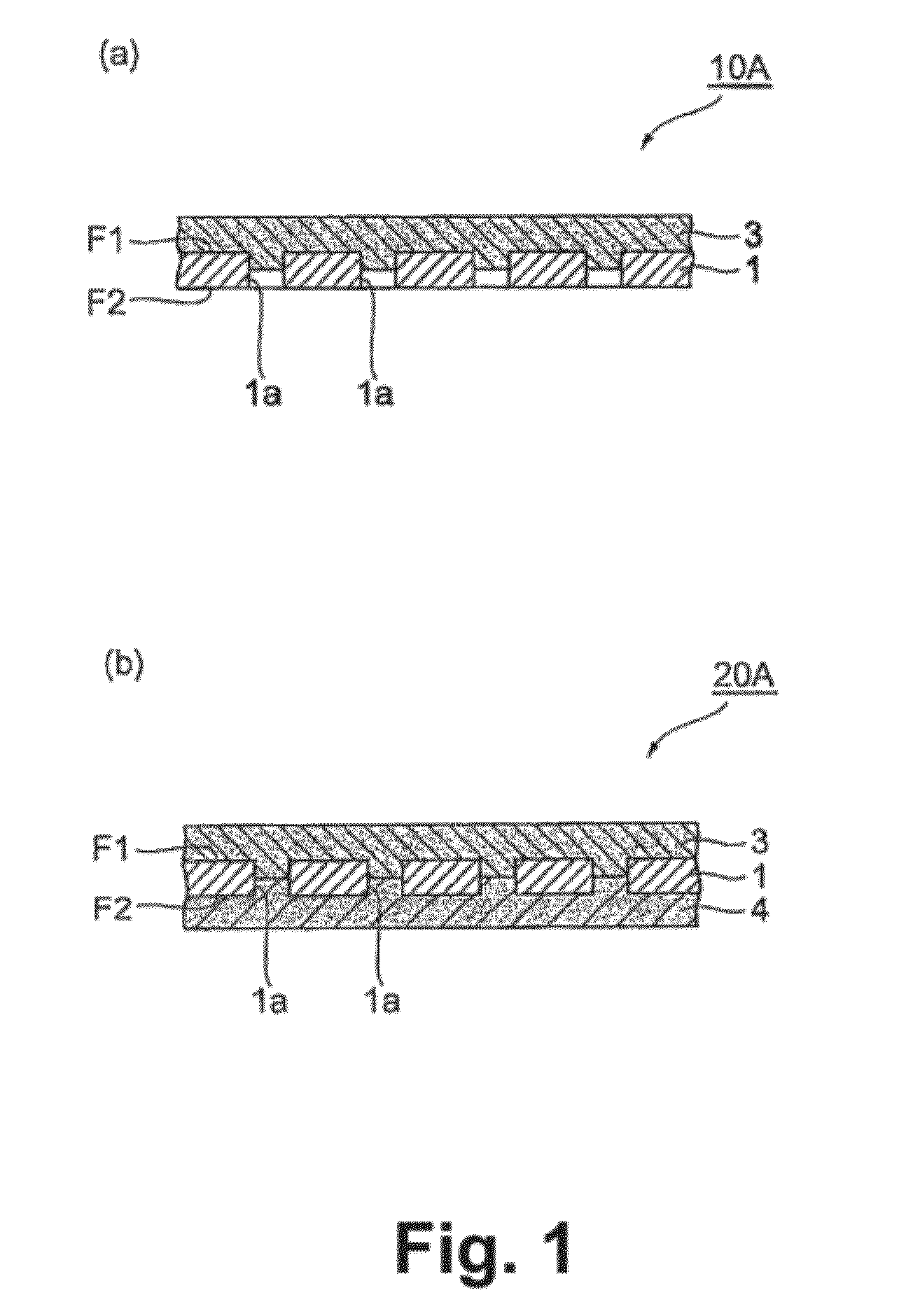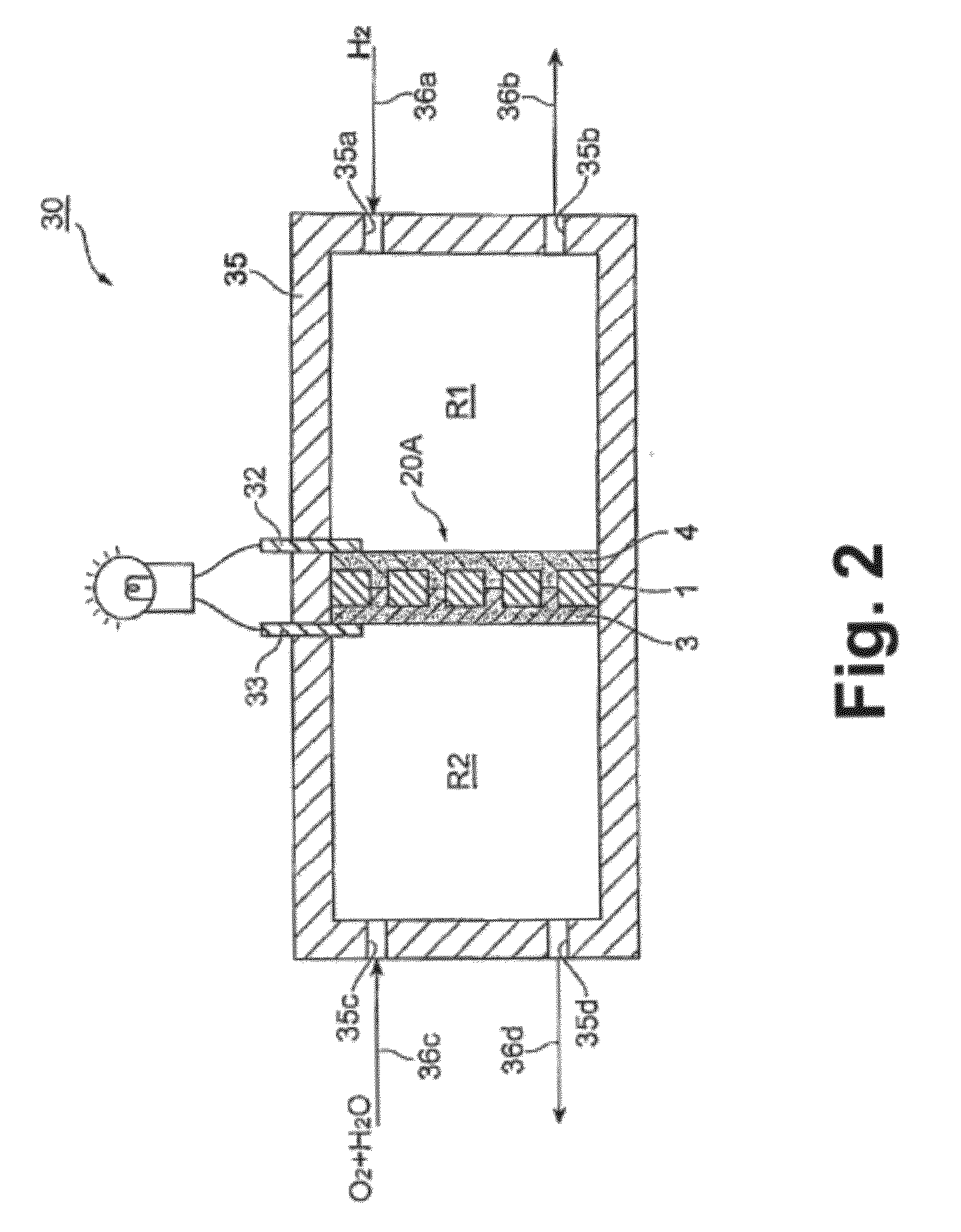Solid electrolyte membrane, fuel battery cell, and fuel battery
a technology of solid electrolyte membrane and fuel battery, which is applied in the manufacture of cell components, final product manufacturing, electrochemical generators, etc., can solve the problems of insufficient strength of solid electrolyte layers less than 0.3 mm thick, and achieve low internal resistance, strong electromotive force, and mechanical strength.
- Summary
- Abstract
- Description
- Claims
- Application Information
AI Technical Summary
Benefits of technology
Problems solved by technology
Method used
Image
Examples
first embodiment
[0076]The fuel battery cell 20A shown in FIG. 1(b) has catalyst layer 4 on the face F2, where the solid electrolyte layer 3 is not provided, of the solid electrolyte membrane 10A. As can be seen from FIG. 1(b), the solid electrolyte layer 3 is in contact with the catalyst layer 4 in the openings 1a of the substrate 1. As mentioned above, the contact portion between the solid electrolyte layer 3 and the catalyst layer 4 in each of the openings 1a independently functions as a fuel battery so that the cell as a whole can be regarded as parallel fuel batteries. If the contact portion in one of the openings 1a fails to exhibit the battery performance for some reason, the remaining, many contact portions can maintain the battery performance of the overall cell, so that drastic improvement in durability is realized.
[0077]Fabrication of the fuel battery cell 20A starts with preparation of the solid electrolyte membrane 10A shown in FIG. 1(a), and a paste or slurry for forming the catalyst l...
second embodiment
[0082]The fuel battery cell 20B shown in FIG. 3(b) has catalyst layer 5 formed on one of the faces of the solid electrolyte membrane 10B, such that the solid electrolyte layer 3 and the catalyst layer 5 contact with each other directly.
[0083]Fabrication of the fuel battery cell 20B starts with preparation of the solid electrolyte membrane 10B shown in FIG. 3(a), and a paste or slurry for forming the catalyst layer (second slurry) in the same way as in the first embodiment. The paste or slurry for forming the catalyst layer is applied to one of the faces of the solid electrolyte membrane 10B, and the solid electrolyte membrane 10B with the slurry applied is dried and / or baked, to thereby obtain fuel battery cell 20B. Here, the fuel battery cell 20B may optionally be compacted by pressing at 40 to 60 MPa for 1 to 30 minutes. However, only the pressing during fabrication of the solid electrolyte membrane 10B may suffice. In this fuel battery cell 20B, the boundary between the solid ele...
example 1
[0121]A fuel battery cell was fabricated using punched metal (26 μm thick, pore size φ60 μm, porosity 32%) as a substrate, and subjected to an electricity generation test. A micrograph of the punched metal taken under a scanning electron microscope (manufactured by JEOL LTD., JSM-6300) is shown in FIG. 5. The thickness of the obtained solid electrolyte membrane (the total of the thicknesses of the electrolyte NaCo2O4 and the substrate) was 47 μm. While the temperature upon measurement of the part where the sample was mounted was kept at 75° C., the open circuit voltage (OCV) was measured. The result is shown in Table 1. A current-voltage curve at 75° C. is shown in FIG. 7.
PUM
 Login to View More
Login to View More Abstract
Description
Claims
Application Information
 Login to View More
Login to View More - R&D
- Intellectual Property
- Life Sciences
- Materials
- Tech Scout
- Unparalleled Data Quality
- Higher Quality Content
- 60% Fewer Hallucinations
Browse by: Latest US Patents, China's latest patents, Technical Efficacy Thesaurus, Application Domain, Technology Topic, Popular Technical Reports.
© 2025 PatSnap. All rights reserved.Legal|Privacy policy|Modern Slavery Act Transparency Statement|Sitemap|About US| Contact US: help@patsnap.com



